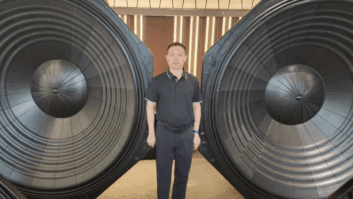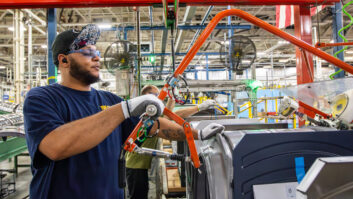Snapdragon platform upgraded; autonomous vehicles in sights
Qualcomm addressed a packed crowd at Mandalay Bay in Las Vegas on the first Media Day of CES 2017, with the chipmaker using the event to debut its new Snapdragon 835 processor.
It also touched upon its work in helping develop the future of autonomous vehicles.
The first platform to employ 10nm FinFET process node, the Snapdragon 835 enables OEMs to develop mobile devices that are smaller, more powerful and more efficient, said Keith Kressin, product management senior VP of Qualcomm Technologies. Battery life will be improved, with devices able to deliver 24 hours of life on a single charge, he said, adding that It also offers improved signal-to-noise ratio for audio, providing a spatial component to audio.
Snapdragon 835 will also have a dramatic effect on imaging, the exec noted. “If you poll users, the thing they want year after year is a better camera,” said Kressin, “and they’re going to get a better camera with 835.” OEMs will be able to up build in a 32-megapixel single and 16-megapixel dual-camera employing Qualcomm’s earlier introduced Clear Sight technology.
Other features of the 835 include an integrated Snapdragon X16 LTE modem with support for Category 16 LTE download speeds up to 1Gbps and and Category 13 LTE upload speeds up to 150 Mbps. Built-in 802.11ad multi-gigabit Wi-Fi will offer up to 4.6Gbps peak speed. For security, device makers will be able to build in multifactor biometric authentication, such as fingerprint, iris and facial recognition.
The Snapdragon 835 is currently in production and is expected to ship in commercial devices in the first half of the year. It will support Android and Windows 10, including support for Win32 apps. It will be found in an array of consumer electronics, including smartphones, tablets, virtual-reality headsets and TVs, among other devices.
Qualcomm is also highlighting its work in autonomous vehicles at its CES booth. “This is a transformative time in automotive,” said Patrick Little, Qualcomm’s automotive senior VP and general manager. “The pace of innovation is unprecedented.”
The automotive industry is being driven by a desire to bring safety to the next level, said Little, and there are three technologies assisting the movement: high-speed, high-quality connectivity; “electrification” and moving away from fossil fuels and toward efficient vehicles; and autonomous driving.
“The center of all these transformations is intelligently connecting everything to the car,” said Little. “Connecting to the car in front of you for braking, being to talk to the network, [and] being able to access the Cloud.” These things are the foundation for any move forward in automotive, particularly in the path to autonomous driving, he added.
Qualcomm is working with multiple automakers and technology providers in its goal to bring heterogeneous compute — a vehicle’s ability to sense its environment and react to change in it — to fruition. And while the benefits of autonomous driving may be initially confusing, “the truth of the matter is, we’re all partnering with as many ecosystems as we can” to make it a reality, Little said.













